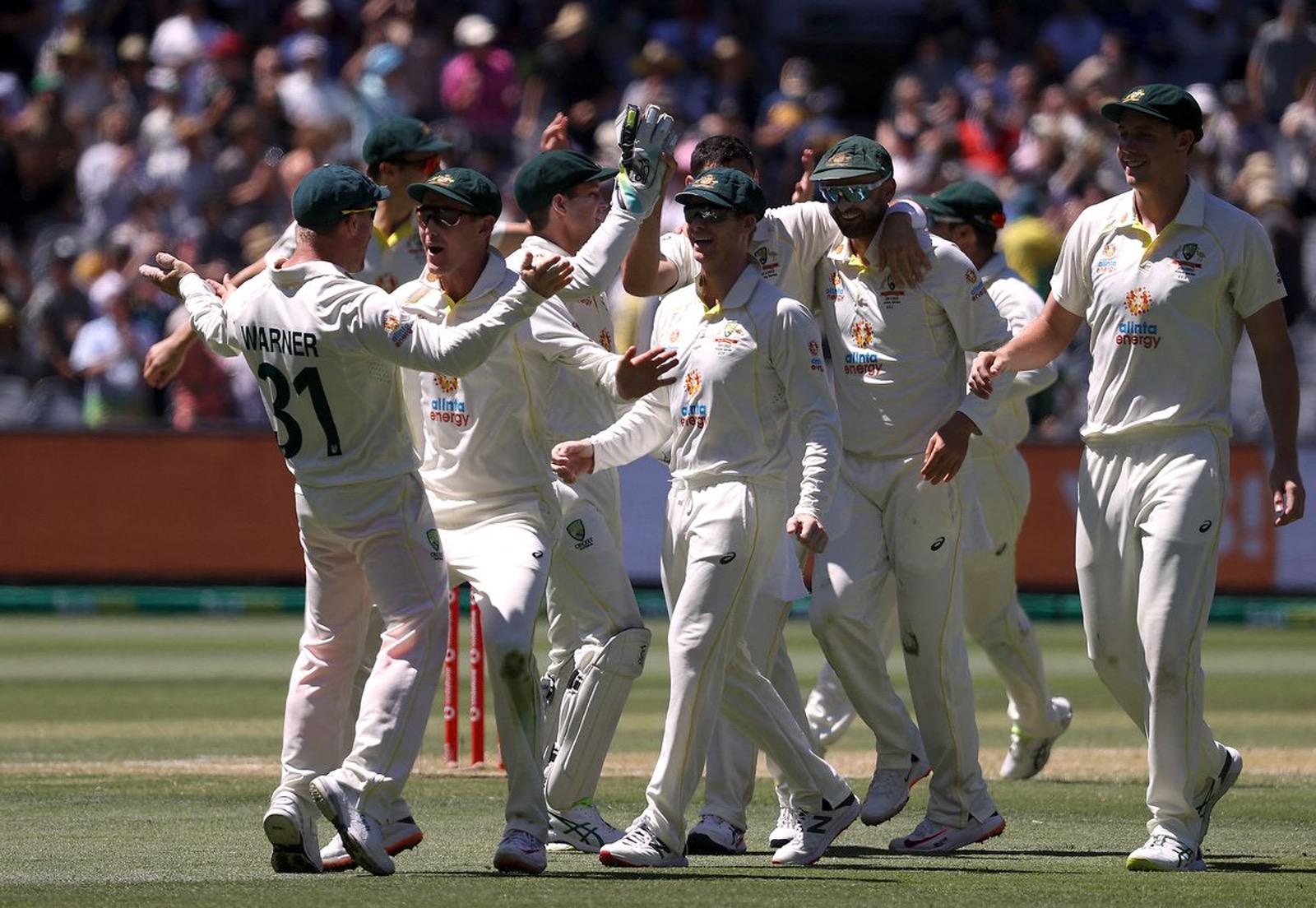The Boxing Day Test saw Test cricket at its best.
No, really. And I am not echoing Chris Silverwood’s inevitable call to take comfort from the positives England could draw from the game [Ed: what positives?]. Actually, for a while, on the second morning and part of the afternoon, while James Andersson and Mark Wood were bowling, England were at their best and seemed to have clawed their way back into the game.
That it all ended so lamentably in an ignominious innings defeat after Australia themselves had only made 267 has led to an intense outburst of wailing and the gnashing of teeth from England supporters, which is entirely understandable.
The reasons for England’s abject surrender in Australia, with The Ashes surrendered after just twelve days’ play, have been much discussed already, not least in this blog. It is mostly down to the batting. It is truly staggering that in this calendar year England’s third highest scorer is Extras.
England equalled a record previously held by Bangladesh in losing nine Tests in a calendar year. It is not unusual for England teams to be thrashed in Australia, and India – where they lost 3-1 – is also tricky territory. What is really worrying is that they are starting to look vulnerable at home.
New Zealand played three Tests in England in 2021, including the ICC Men’s World Test Championship final against India, and won two of them; they should probably have won the third. As so often England picked a second-string side and barely turned up.
New Zealand introduced a new opener – born and raised in South Africa – Devon Conway, who batted well into the second day of his first Test, at Lord’s, and made a double century. Conway’s opening partner, Tom Latham, has played 61 Tests, and has an average of 41 and a strike rate of 45. Their number five, Henry Nicholls, has played 42 Tests and has an average of 40 and a strike rate of 49. We are not even talking about the big guns, Kane Williamson and Ross Taylor. New Zealand are doing something right. It has something to do with the pitches used for domestic cricket. It has even more to do with mental toughness. Test cricket takes a long time. Look at the strike rates; there really is no rush. Ollie Pope, England’s most talented young batsman, seems too eager to get moving when he is at the crease. After 22 Tests he has an average of 29 and a strike rate of 50. Marnus Labushagne, the world’s number one Test batsman, has played one Test fewer than Pope; he has an average of 61 and a strike rate of 53.
One thing New Zealand don’t have is money. England have plenty, although much of it has been gormlessly squandered on The Hundred. The tone was set by the understandable, but wrong decision of the England and Wales Cricket Board to abandon their fans on terrestrial television and go with Sky. Everything since then has been about money. The Test team is paying the price.
But back to the MCG and why it was such outstanding Test cricket. I am really talking about the last hour of the second day when England began their second innings with a deficit of 82. Batting had been challenging throughout the match. Marcus Harris, who made what was in effect a match-winning innings of 76, never looked really comfortable. The only batter on either side who looked at all comfortable (in both innings) was, inevitably, Joe Root.
But as the players came out for that final hour, one somehow knew that this was going to be special. Not for the first time in the series England’s selection policy came into focus. Was Zak Crawley, who hadn’t played any cricket for weeks and had a Test average for the year of 11, really in a fit state to face Mitchell Starc and Pat Cummins before a baying MCG crowd.
It made for dramatic, thrilling watching. Starc did the initial damage, dismissing Crawley and Dawid Malan with successive balls, and almost getting Root with the hat trick ball.
But it was Cummins, running in from the Members’ End, who provided the greater challenge. Cummins didn’t actually get a wicket in the innings but if he had received the player of the match award nobody could have complained. His first ball, to Haseeb Hameed was effectively a fast off-break which almost took Hameed’s head off. He just carried on from there. It was unrelenting. It was not unlike the challenge presented by Anderson earlier in the day but Cummins is taller and faster. He never seems to bowl a bad ball. He will be one of the all-time greats and we are lucky to be able to watch him.
And then there was “Scottie” Boland. He bowled a single over and dismissed Hameed and then bowled the night watchman, Jack Leach, who shouldered arms. The roar of the crowd when Leach’s wicket fell was incredible; the umpire Paul Reiffel said that in all his years of playing and umpiring he had never heard anything like it. It was almost matched by the roar of approbation Boland received as he made his way down to fine leg and his adoring fans in Bay 13.
The third day – well, what there was of it – was more fantasy than theatre. Root and Ben Stokes started reasonably positively but it always seemed probable that if a wicket fell early the end would not be long delayed. Starc bowled Stokes in his second over. Even then nobody could have predicted 68 all out. Boland finished with the Under-12 figures of 4-1-7-6, and of course the player of the match award.
It really is an uplifting story. Boland is 32 and has been playing for Victoria for years and is a sort of MCG specialist. He was only playing now because of injuries in the squad. He learned about his selection on Christmas Eve. He bowled steadily in the first innings. Ironically, he seemed more of a classic English medium-fast bowler than another Starc or Cummins.
The real point is that Boland is not simply a local boy. He is an indigenous local boy, the second indigenous male to represent Australia, the first having been the great Jason Gillespie.
Since 2020 the match award for the player of the Melbourne Test has been the Mullagh Medal, named after the indigenous cricketer Johnny Mullagh. Mullagh was a leading figure on the Aboriginal tour of England, which took place in 1868. He was an outstanding all-rounder and also the reserve wicketkeeper. After the tour he had a stint as a professional at the Melbourne Cricket Club, living at the MCG. He lived for many years in relative obscurity in a hut near Harrow on the Glenelg River in Victoria, but emerged periodically to play top-class cricket. He died in 1891.
There was something genuinely wonderful about this Medal, redolent with overtones of the history of the aboriginal people in Australian cricket, being awarded to an indigenous cricketer, a manifestly shy and almost embarrassed man, in his very first match. It overshadowed everything else. Somehow, it mattered.
Will Boland play for Australia again? It is quite possible that he won’t. Famously, Gillespie never played again after getting a double century against Bangladesh. (He was a bowler, for those who don’t know.)
Michael Vaughan, commentating on Fox TV, suggested, half in jest, that Boland should retire immediately.
What is clear is that he will never again take six for seven in a Test.





5 comments
Alex+Deverell
Thanks Bill, excellent piece as usual. I haven’t been able to watch much of the last 3 tests as have been in SL as you know (quite glad!). All just too depressing….
David Edwards
Excellent and most enjoyable, Bill. I particularly enjoy your historical touches. So interesting.
Stephen Fordham
An excellent commentary, as always!
Stephen
Piers+Pottinger
super piece and well argued
Will+Inglis
Excellent article as ever, Bill.
There are two more test matches in this series, so I wouldn’t be too sure that Boland won’t take six for seven , or something close, in one of them.
Will